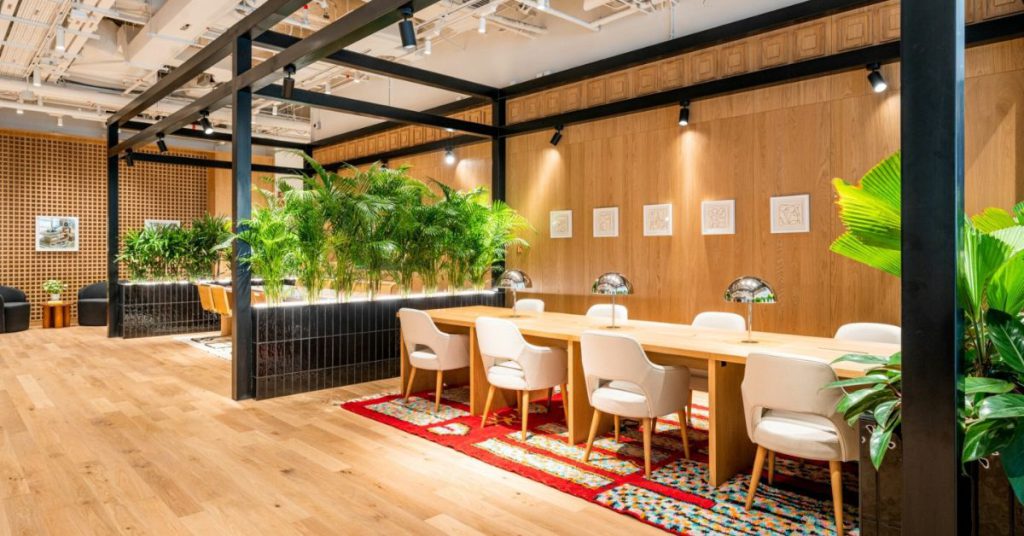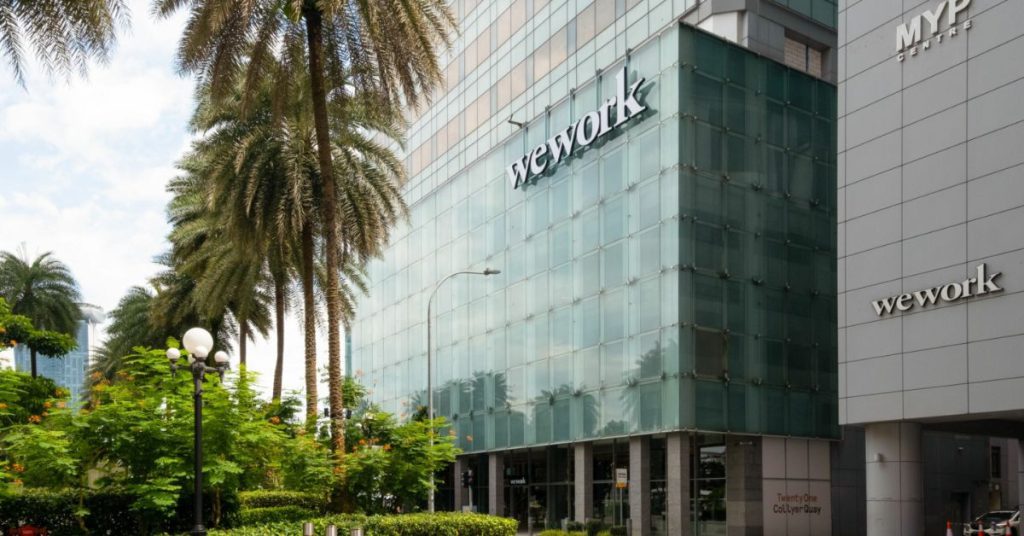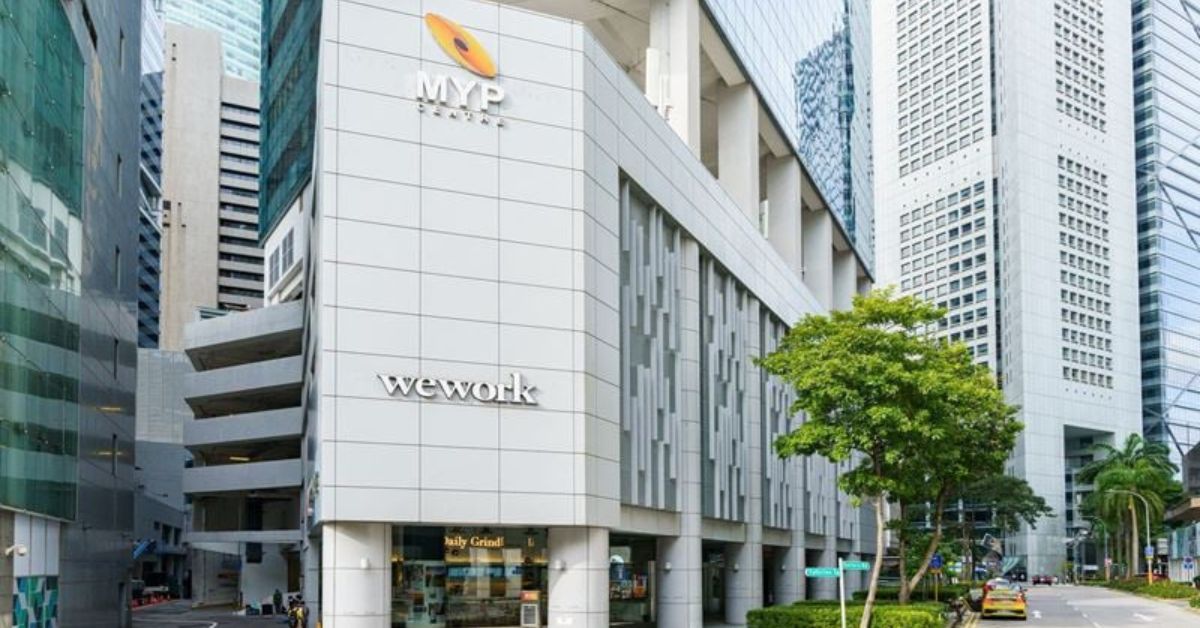The coworking industry has undergone seismic shifts in recent years, driven by a global pivot to flexible work models. While this change initially fueled demand for shared office spaces, the journey has been far from smooth for pioneers like WeWork.
The company’s decision to relinquish two prime locations in Singapore shines a spotlight on the challenges coworking giants face in a volatile market, Bloomberg reported.
A tough call
WeWork is closing two of its central Singapore locations, marking a significant moment in its local operations.
One of its coworking space spanning the 17th to 20th floors at Manulife Tower along Singapore’s 8 Cross Street has ended operations. Another three-floor space in an office building at 83 Clemenceau Avenue on the city centre fringe will close in 2025.

According to Bloomberg, a WeWork spokesperson was quoted as saying that despite Singapore being a “priority market,” it has “made the difficult decision” not to renew leases at the two locations.
WeWork’s decision to close the two locations aligns with its broader global strategy to rationalise real estate and focus on profitability.
The firm will maintain 12 other locations “for the foreseeable future”, primarily in the Central Business District in Singapore. However, the closures highlight a shift in priorities, as the company recalibrates its operations in response to evolving market demands.
The closures come amid a spike in office vacancies in Singapore’s prime locations. Many companies are cutting costs by consolidating office spaces or opting out of coworking arrangements entirely.
For instance, Tencent Holdings recently vacated its WeWork office in Raffles Place for a new prime location, reflecting a broader trend among corporate tenants seeking stability and cost-efficiency.
WeWork’s rise and fall
WeWork’s story began in 2010 with a revolutionary idea—create shared workspaces that foster collaboration and innovation.
By 2019, the company was valued at an eye-watering US$47 billion, making it one of the most valuable startups of its time.
However, cracks in its foundation soon appeared. A botched IPO attempt in 2019 revealed significant issues, including unmanageable debt, questionable management practices under co-founder Adam Neumann, and unsustainable growth strategies.
Neumann’s departure marked the beginning of a tumultuous period for the company.
The pandemic further accelerated its decline. Remote work became the norm, and businesses scaled back on office space, leaving WeWork with underutilised leases. Despite restructuring efforts, including layoffs and lease cancellations, the company continued to bleed cash.
By 2022, its stock price had plunged by nearly 99%, and in November 2023, WeWork filed for bankruptcy. While its emergence from bankruptcy earlier this year signalled a potential turnaround, the global coworking giant remains far from stable.
Global challenges mirror local struggles
The difficulties in Singapore reflect broader problems faced by WeWork globally. Once a shining star in the coworking world, the company seemingly struggled to adapt to a post-pandemic reality where remote and hybrid work models dominate.

After filing for bankruptcy in the United States, WeWork emerged in May 2024 following a restructuring plan that handed over equity to a group of lenders and technology partner Yardi Systems. The move allowed the company to shed significant debt, but its global footprint has been shrinking.
For instance, WeWork closed its flagship building in Manchester, UK, earlier this year due to lease negotiation failures. Similar closures and consolidations have occurred in other markets, including Europe and North America, as the company strives to rationalise operations.
The pandemic proved to be a major turning point. Once celebrated for its “growth-at-all-costs” model, WeWork’s financial woes were exposed when businesses cancelled leases and workspaces stood empty during lockdowns.
Its approach of prioritising rapid expansion without strong occupancy left the company vulnerable to sudden shifts in demand.
What’s next for coworking?
WeWork’s rise and fall underscore the risks of rapid expansion without a clear path to profitability. Its growth-at-all-costs model, while revolutionary during times of abundant capital, faltered when market conditions changed.
Low occupancy rates, inflated operational costs, and mounting financial risks proved unsustainable.
For the coworking industry, WeWork’s story is both a cautionary tale and a blueprint for adaptation. While demand for flexible workspaces persists, companies must focus on sustainable growth, efficient cost management, and strategic market positioning.
Globally, the coworking landscape remains in flux. WeWork’s struggles highlight the challenges of balancing expansion with profitability in an era of hybrid work. Still, the concept of shared office spaces isn’t going away.
WeWork’s enduring presence in Singapore shows a commitment to the market despite setbacks. On the global stage, its trimmed-down operations and leaner business model may offer a second chance at stability.
Whether WeWork can rebuild its brand and regain its former glory remains to be seen, but one thing is clear: the era of reckless growth is over, and the future of coworking will require adaptability, resilience, and a keen understanding of market needs.
- Read other articles we’ve written about coworking here.
Featured Image Credit: WeWork

